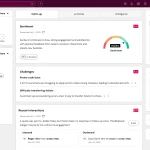
The Australian stock markets have seen a rapid rise over the past few years, driven by areas such as technology and resources stocks. Along with this growth, investors are increasingly considering listed options trading to diversify their investment portfolios and enhance returns.
Trading options can provide an additional income stream or hedge against losses on other assets in a portfolio of investments. However, knowing the potential risks and benefits is crucial before undertaking any active option trades in Australia. This article will discuss the different types of available options trading strategies in Australia and how they can offer potential rewards while mitigating the associated risk.
What is an Options Contract and How Does it Work in Australia?
An options contract is a financial arrangement that grants the holder the right, but not the obligation, to buy or sell an underlying asset at a predetermined price on or before a specific date. In Australia, options contracts are traded on the Australian Securities Exchange (ASX) market. This type of contract typically involves sharing risk between two parties, the buyer and the seller. The buyer pays a premium to the seller for the option to buy or sell the asset at the predetermined price, known as the exercise price or strike price.
If the buyer decides to exercise their option, the seller must fulfil the contract at the agreed-upon price. Options contracts provide flexibility for investors and traders, allowing them to make investment decisions based on market estimations. Saxo has a comprehensive range of Australian-listed options contracts, offering investors access to the most commonly traded stocks on the ASX.
Advantages of Trading Listed Options in Australia
Options trading offers many advantages for investors and traders. Firstly, it lets you gain exposure to large companies without buying the underlying stock or asset. Secondly, options allow an investor to limit their risk, as they can be used as insurance against potential losses on other asset classes in their portfolio. Additionally, listed option contracts are often more affordable than traditional stocks, allowing investors to diversify their investments without breaking the bank.
With options trading, there is no need for stop-loss orders, which can increase risk if executed at unfavourable prices due to market movements. Option trading strategies also allow investors to take advantage of low-risk opportunities by reducing the market entry cost.
Disadvantages of Trading Listed Options
Despite the potential rewards and flexibility of options trading, it is essential to understand the risks associated with this form of investment. Options trading involves complexity, as many different strategies can be employed. Additionally, options contracts can be challenging to understand due to their technical nature, requiring active management and monitoring.
Option prices are highly volatile and, in some cases, may move quickly against an investor’s position, resulting in significant losses within a short period. As such, investors need to thoroughly understand how options work before engaging in any trades or taking on additional risk. Additionally, an investor should continuously diversify their portfolio to mitigate potential losses.
Strategies for Minimising Risks When Trading Listed Options
When trading listed options, there are many strategies available to minimise risk. Firstly, investors should consider using covered calls to generate income from their underlying stock position while limiting downside risk. Buying a put option can also be an insurance policy against losses on a particular stock or index in your portfolio.
Investors should also look into using spread trades such as bull or bear spreads which involve the simultaneous purchase and sale of two options at different exercise prices for one underlying asset class. Lastly, straddle and strangle trades allow investors to benefit from movements in either direction without bias towards either side.
Regulatory Environment for Options Trading in Australia
The Financial Securities and Investments Commission (ASIC) has specific regulations for the financial services industry in Australia, which rules about options that protect investors from potential risks associated with this form of investment. ASIC requires all trades to be conducted through approved exchange markets such as the ASX or Chi-X.
Additionally, brokers must ensure that clients have sufficient knowledge and understanding of the products they are trading before executing any transactions. Finally, investors should familiarise themselves with ASIC’s regulatory requirements for options trading to maximise their safety when entering these investments.
Software and Tools Used to Manage and Track Option Trades
Managing and tracking option trades can be daunting, particularly for newer traders. Fortunately, a variety of software tools are available to help investors simplify the process and reduce risk.
Many investors use various software tools and platforms to effectively manage and track options trades. Popular options include online brokers that provide access to exchange markets and trading platforms such as MetaTrader 4 (MT4), which are tailored for the retail trader. Additionally, specialist options analytics packages are available, allowing traders to analyse potential trades and track and manage existing positions.
Finally, investors should always ensure that they are up to date with any changes in the regulatory environment which could affect their ability to trade options in Australia.
Conclusion
Options offer an attractive way for investors to diversify their portfolios without taking on additional risk. However, it is essential to understand the risks associated with this type of trading and be familiar with the regulatory environment and the software and tools available. With a thorough understanding of these concepts, investors can better manage their positions and potentially increase profits while minimising losses.










